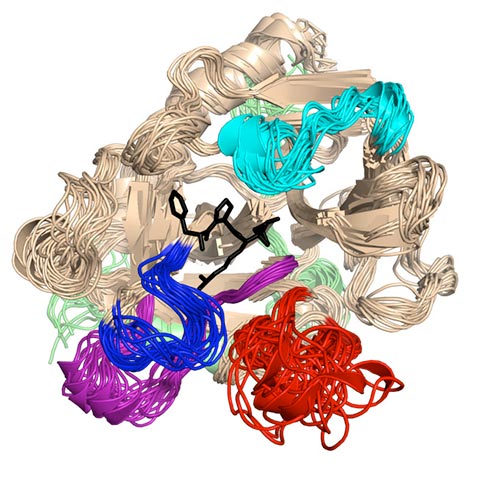15 November 2016
50 Voices of the Future: Elizabeth Komives on keeping humans healthy

In honor of UC San Diego Extension’s first 50 years, 50 Voices of the Future asks thought leaders about the trends, breakthroughs and social advances they foresee over the next 50 years.
Despite all the medical advances in history, we still know remarkably little about disease. “We only know the causes of probably 20 diseases out of the thousands of things people suffer from,” says UC San Diego’s Elizabeth Komives. “And that’s because we don’t understand how the system works.” Komives, a professor of chemistry and biochemistry who runs the school’s biophysics research lab, has spent years studying the proteins contained in our cells – research that is critical, she says to understanding how the human body functions as a whole. Future advances in this field, she believes, will make it that much easier to fight disease and keep humans as healthy as possible.
Why is the work you do important?
My philosophy is that you can’t understand how to intervene in a system that you don’t understand. There have to be people – and I am one of these people – who do basic research. We don’t know how even the simplest cell inside our body actually does what it does. Every cell in a human body has exactly the same genes in it. But every cell does something different. Your hair cells are completely different from your liver cells, which are completely different from your lung cells. And we don’t even know what all the proteins are or how they’re modified in any cell – yet. So how can we know how to intervene effectively to change these functions – to stop a cancer cell or make a good cell grow better or prevent a particular drug’s side effects – when we simply don’t know how they work yet? I’m working at the very basic level of trying to understand how these proteins interact with each other, how they work together, who binds with who to create which functions when, so we don’t make the mistake of plowing forward with practical applications on a system we don’t yet understand. When a patient says, “I have X symptoms,” our research will help a doctor be able to say, “Oh, that’s because this protein is malfunctioning or this other protein is malfunctioning.”
What are the influential/exciting developments happening in your field now and why?
My lab has discovered some incredibly interesting things that proteins actually do. It’s very cool. We watch these proteins move with all different kinds of experiments and we go, “Oh my God, look at what this thing is doing.” And you never would have guessed it. But you can see it in the experiments. And it’s amazing. And that’s just one protein. And we have 6,000 different proteins in every cell and so we have so much yet to learn about how nature has evolved these proteins to do the functions that need to be done in our normal functioning biology

Ensemble of thrombin structures that best represent the NMR-derived residual dipolar couplings
What’s the next big thing?
To me, the next big thing in our field is increasing diversity. I am a firm believer that the lens through which you look at your experimental results is a personal lens, and a person’s background and training and family and life experiences provide a different viewpoint of what you see what you actually get an experimental result. This is why it’s very important to me that we can no longer tolerate the white, over-40, male scientist as the only acceptable lens. I am trying my best to promote diversity among scientist and that’s what I’ve been trying to do with the Research Scholars program that’s part of UC San Diego Extension’s Academic Connections Summer program, which targets students from underprivileged backgrounds, from underrepresented minority groups and girls who maybe feel they won’t be popular if they’re a nerd.
How big an impact will your field play in shaping the future of the San Diego region and beyond?
Up until about 10 years ago everybody thought that drugs had to be small organic molecules and now that view has completely changed. Every year, there are many drugs coming on the market that are actually proteins. And so our understanding of how proteins work is going to be super-critical for this explosion of alternative therapies and better treatments for diseases. Both in biotech and in the pharmaceutical industry, this explosion is happening, and San Diego is I think third in the U.S. for those industries, behind only San Francisco and Boston. So I’m really looking forward to training future scientists who will work in the San Diego area and also having closer relationships with companies on the Mesa so they understand what we’re doing.
Hop into your time machine … what does the future look like for this field in 50 years? How can individuals/companies get prepared for what’s next?
With improved physics, we will be able to actually watch single proteins move inside cells. Right now we still cannot do that. That will enable us to truly understand the function of proteins in their native environment, as individuals. Right now, we’re targeting drugs to the average behavior of proteins, but it may be that one of these proteins is the outlier and that one is the problem. And so if we can’t visualize them individually, we can’t know.
Komives works with UC San Diego Extension on its Research Scholars program, which is part of its pre-college Academic Connections Summer program. The program allows students to work alongside world-renowned faculty researchers in such fields as chemistry, biochemistry, biology and nanotechnology.